Focus on the Breath, Not the Pose
In the overwhelming world of yoga, practitioners often become fixated on achieving perfection: the perfect pose, alignment, or sequence. However, a more beneficial approach is to focus on the breath, not the pose. This practice not only calms the mind but can also lead to profound transformation in how you approach yoga and life. When you prioritize your breath, you engage in a practice that is both enriching and liberating.
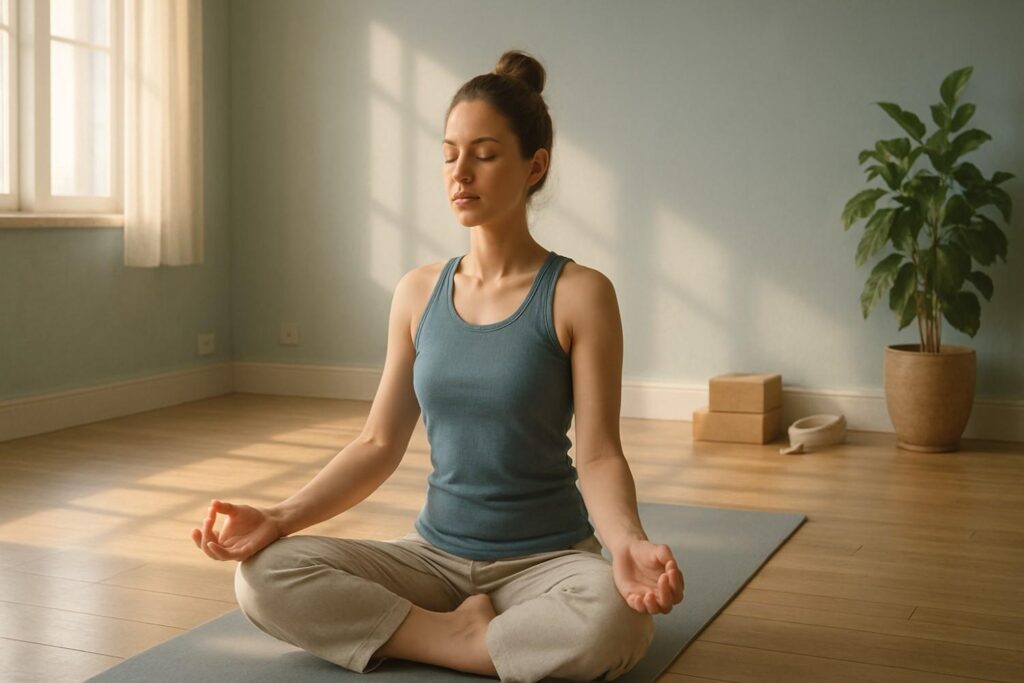
The Importance of Breath in Yoga
Connection to Mindfulness
Focusing on the breath during your practice allows you to anchor yourself in the present moment. Breath awareness fosters a deeper connection to your emotions and physical sensations, making your practice more meaningful. Breath acts as an anchor that cultivates mindfulness, drawing attention away from past regrets and future anxieties to the here and now 1.
Enhancing Physical Performance
- Regulated Movements: Your breath serves as a cue for movement. Inhale to expand and open up, and exhale to deepen into poses. This rhythm not only enhances performance but also significantly reduces the risk of injuries caused by rushing through poses or incorrect alignment.
- Injury Prevention: Aligning your movements with your breath reduces the risk of injuries by promoting proper body mechanics, allowing movements to feel more natural and fluid.
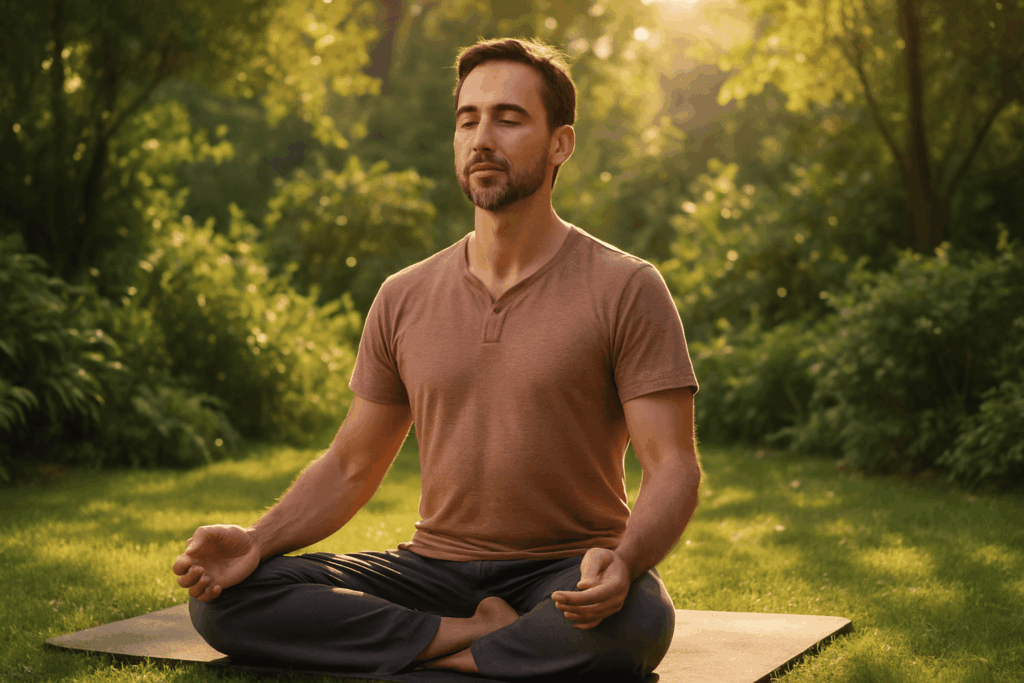
Structuring Your Practice Around Breath
Create a Breath-Centric Sequence
1. Warm-Up with Breath Awareness: Start your practice by focusing solely on your breath. Spend a few minutes in a comfortable seated position, practicing deep, mindful breathing.
2. Integrate Breath with Movement: As you transition through poses, consciously inhale and exhale, letting your breath guide your movements. This not only improves your practice but also enhances emotional and mental states.
3. Conclude with Breath Work: Finish your practice with a relaxation phase that emphasizes extended breath. Techniques such as pranayama can be beneficial in calming the mind and body 1.
Tips for Focusing on Breath
- Slow Down: Take your time with each pose. Allow the breath to lead your practice rhythm.
- Visual Reminders: Use cues like “inhale” and “exhale” as reminders for when to move or hold poses.
- Practice Regularly: Incorporate breath-focused techniques in everyday activities such as walking, sitting, or during mindfulness sessions. This will increase your awareness and enhance your overall yoga experience.
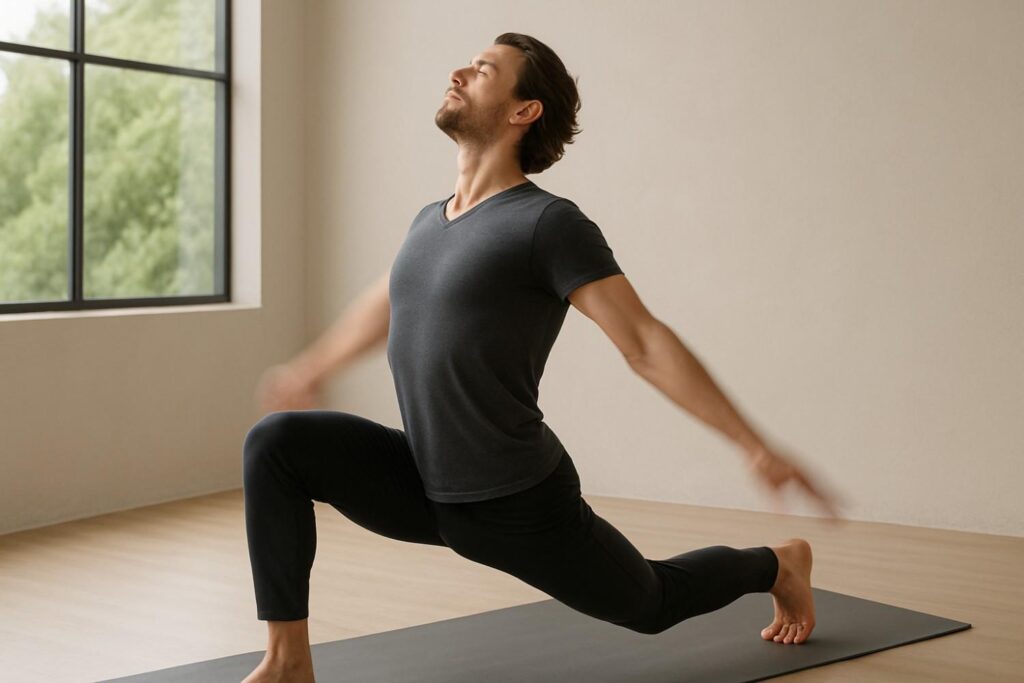
FAQs
1. Why is focusing on breath more beneficial than perfecting poses?
Focusing on the breath helps cultivate mindfulness and deeper awareness, which outweighs the benefits of merely achieving physical poses.
2. How can I improve my breath awareness during practice?
You can improve breath awareness by practicing slower transitions, engaging in pranayama techniques, and regularly returning your focus to your breath.
3. What are the benefits of a breath-centric yoga practice?
A breath-centric practice enhances overall physical performance, encourages mental clarity, and fosters a deeper sense of connection to oneself.
Conclusion
If you’ve shifted your focus from perfect poses to connecting with your breath, you may find that your yoga practice becomes more fulfilling and meaningful. So, take a moment to breathe, appreciate the journey, and let go of the pressures of perfection.
For more insights on enhancing your yoga experience, explore our related topics:
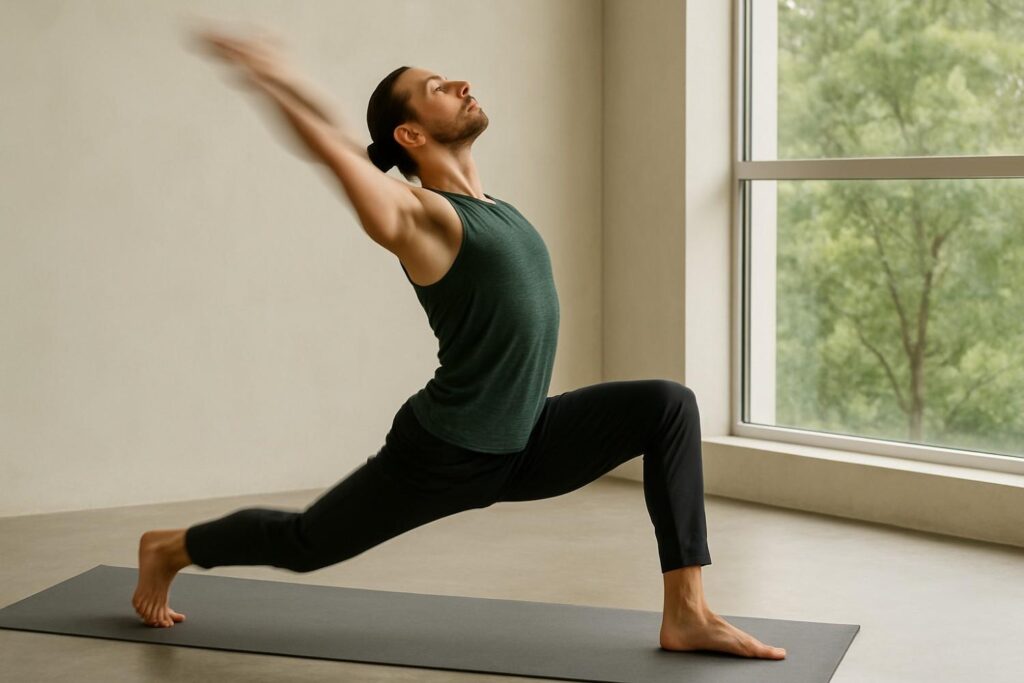
The Importance of Breath in Yoga
Breath is more than just a biological function; it serves as a profound bridge connecting the mind and body within the practice of yoga. Understanding its significance enables practitioners to delve deeper into their practice.
Connection to Mindfulness
Breath awareness is essential in anchoring practitioners in the present moment. By paying attention to each inhale and exhale, individuals cultivate a connection to their current experiences, promoting mindfulness. This presence enhances emotional awareness and allows practitioners to connect their emotions with physical sensations. As they focus on their breath, they may notice how their feelings translate into bodily experiences, fostering a more holistic self-awareness during their practice.
Enhancing Physical Performance
Breath plays a pivotal role in physical performance during yoga. It serves as a cue for movement, promoting regulated and intentional actions. Coordinating breath with movement not only enhances the flow of poses but also aids in maintaining proper alignment. This alignment is crucial for preventing injuries, ensuring that practitioners can engage in their practice safely and effectively. Moreover, being mindful of their breath encourages individuals to listen to their bodies, adapting their practice to suit their unique needs and limits.
Understanding the importance of breath in yoga creates a more enriching and safe practice, ultimately leading to deeper physical and mental benefits.
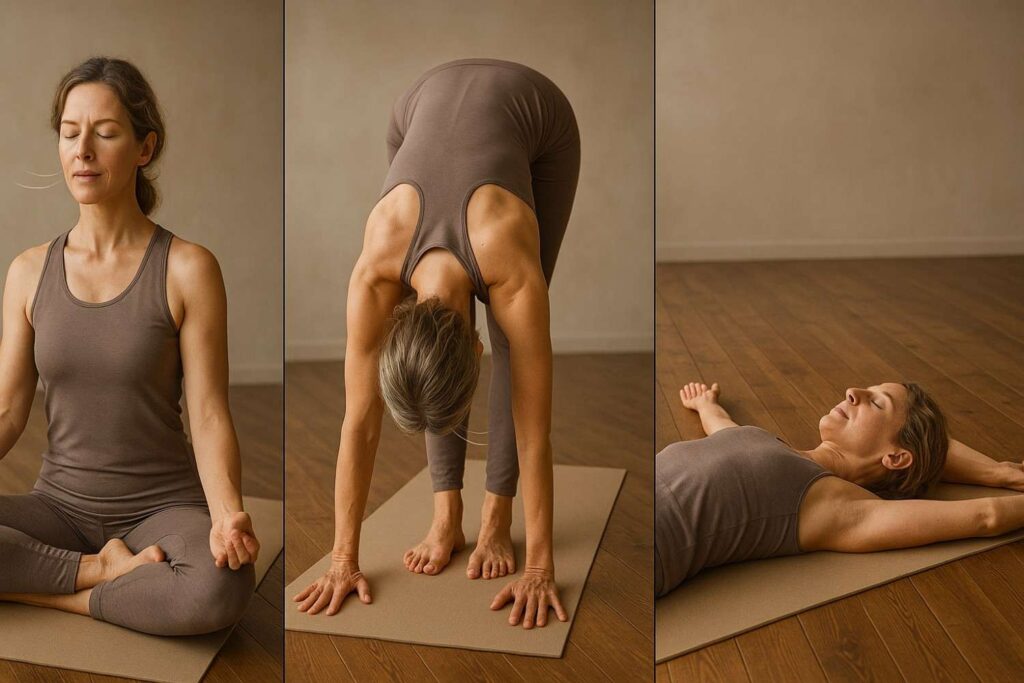
The Breath’s Role in Yoga
Breath is often considered the cornerstone of yoga practice. Understanding its multifaceted role can enhance both the physical and mental aspects of yoga.
A Gateway to Mindful Awareness
Breath links us to the present moment, acting as an anchor that grounds our awareness. By concentrating on the rhythm of our breathing, we maintain focus and mindfulness during practice. This focus allows us to tune into our bodies and cultivate a deeper connection with our movements.
A Bridge Between Mind and Body
The breath serves as a reflection of our emotional and mental states. When we consciously control our breath, we can influence our physiological responses. This conscious regulation encourages relaxation, facilitating a smoother transition between our mental and physical selves. It plays a significant role in calming the mind during the complexities of daily life.
Physiological Benefits of Breath Control
Engaging with breath exercises stimulates the parasympathetic nervous system, inducing a state of calm. This response counters the stress reaction, helping to balance the body’s systems effectively. Breath control can significantly mitigate anxiety and promote overall well-being.
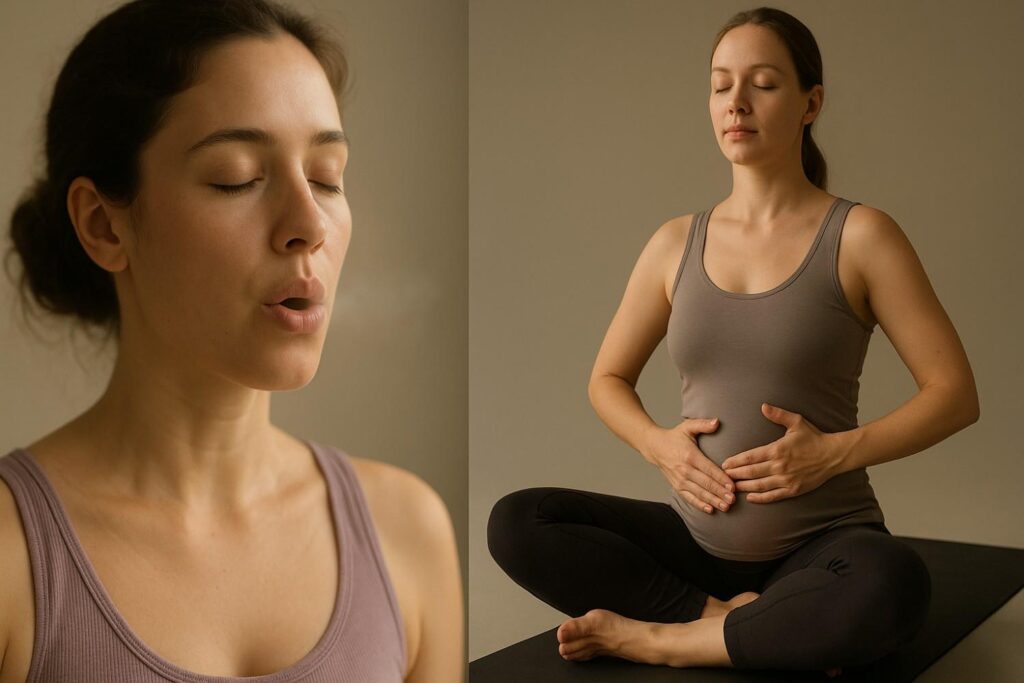
Psychological Dimensions of Breath Focus
Incorporating pranayama techniques into yoga practice helps in managing mental distress. Focusing on the breath fosters mental clarity and concentration, enabling individuals to navigate life’s challenges with greater ease. By cultivating this breath-centered awareness, practitioners can enhance their emotional resilience and mental strength.
Structuring Your Practice Around Breath
Incorporating breath awareness into your practice can profoundly enhance both the physical and mental aspects of your experience. Here’s how to create a breath-centric sequence that emphasizes this integration.
Create a Breath-Centric Sequence
- Warm-Up with Breath Awareness: Begin your session with focused breathing while seated. This practice not only centers your mind but also prepares your body for the movements to come. Taking the time to become aware of your breath serves as a powerful transition into your practice, fostering mindfulness from the outset.
- Integrate Breath with Movement: As you move through your series of poses, consciously link your breathing with your physical transitions. For example, inhale deeply as you extend your body and exhale when you fold. This synchronization strengthens the mind-body connection, enhancing the overall effectiveness of each movement. Engaging in mindful breathing during these transitions allows you to cultivate greater awareness of your body’s responses and adaptations throughout your practice.
- Conclude with Breath Work: To finish your session, incorporate relaxation techniques such as pranayama. These breathing exercises will help ground and center you, reinforcing the benefits of your practice. Concluding with breath work provides a space for reflection and integration, allowing your body and mind to settle into the calm that follows physical exertion.
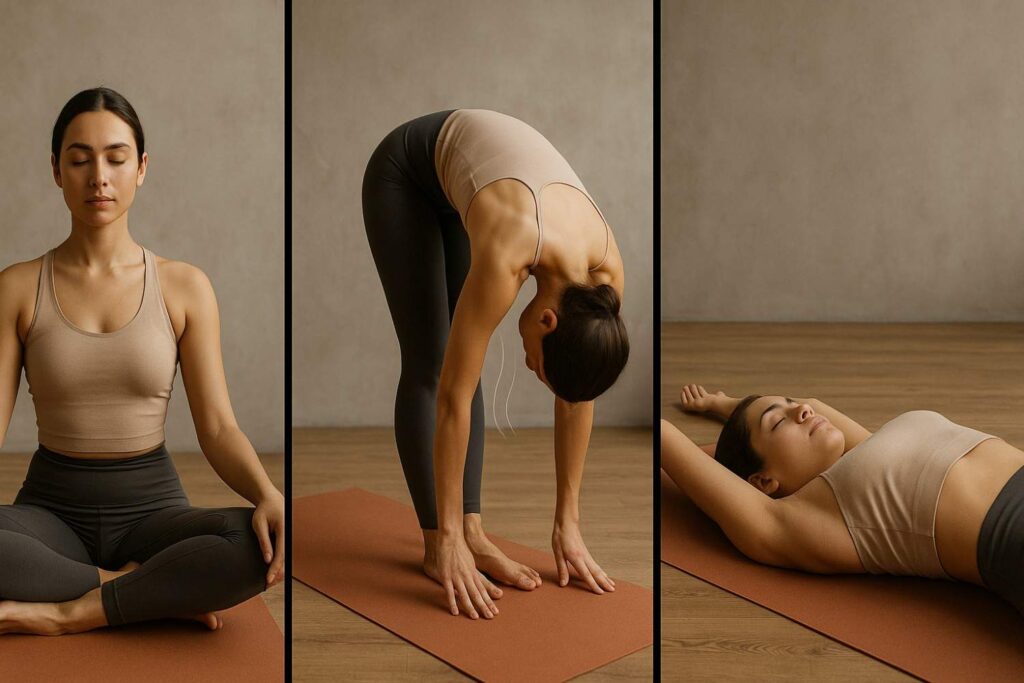
By structuring your practice around breath, you can deepen your awareness and cultivate a richer experience, both physically and mentally.
Yoga Breathing Techniques
Breathing is a fundamental aspect of yoga that connects the body and mind. It enhances the physical practice by promoting relaxation and focus. Here, we will explore two primary breathing techniques used in yoga: Ujjayi breath and deep breathing techniques.
Ujjayi Breath
Ujjayi breath, often referred to as “victorious breath,” is a popular technique in Vinyasa and Ashtanga styles of yoga. It involves a slight constriction at the back of the throat, producing a soft, ocean-like sound during inhalation and exhalation. Practicing Ujjayi breath not only helps regulate breath but also creates a meditative atmosphere during yoga sessions.
To practice Ujjayi breath:
- Find a comfortable seated position or stand tall.
- Inhale deeply through your nose, allowing your chest and belly to expand fully.
- Slightly constrict the back of your throat as you begin to exhale, creating the sound of the breath.
- Repeat this process, focusing on the quality of your breath and the calming sound it produces.
This technique is beneficial because it aids in maintaining focus and enhances the overall yoga experience.
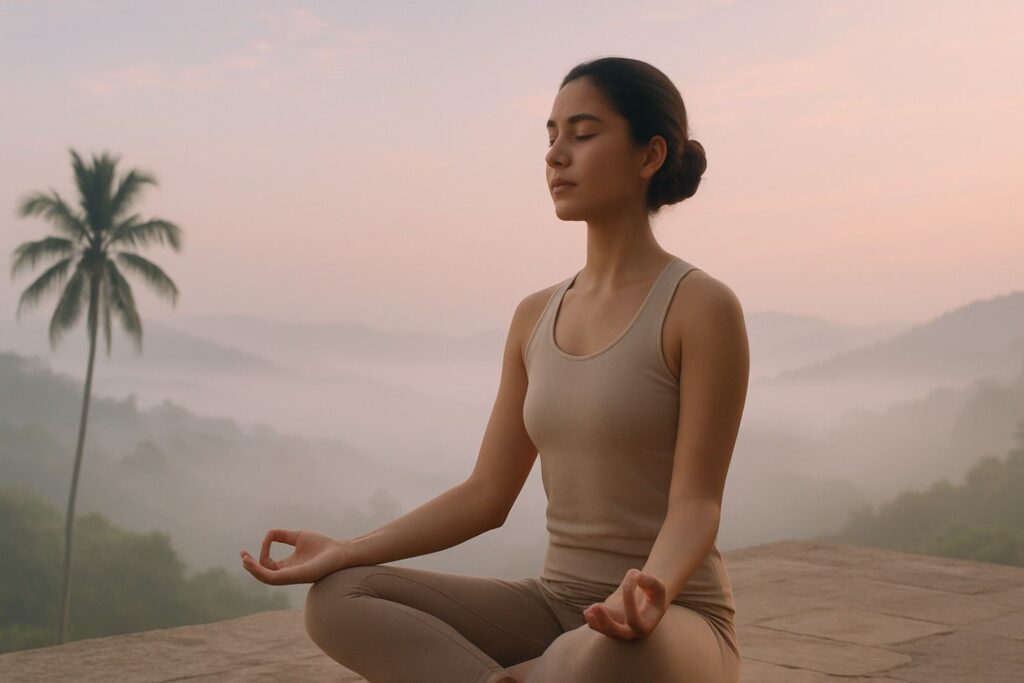
Deep Breathing Techniques
Incorporating deep breathing techniques during yoga poses can significantly enhance your practice. This method encourages taking full, deep breaths, which can deepen stretches and increase bodily awareness.
Key components of deep breathing techniques include:
- Inhaling to expand: As you breathe in, imagine your ribcage expanding, which opens up the chest area. This expansion facilitates a greater range of motion and prepares the body for deeper stretches.
- Exhaling to settle: While exhaling, aim to settle into each posture. This allows for relaxation and lets tension release, enabling a better connection to the body.
By focusing on the breath in this manner, practitioners can enhance their presence on the mat and improve their overall yoga practice.
Benefits of Focusing on Breath in Yoga
Practicing breath awareness in yoga brings several significant benefits that enhance both physical and mental well-being.
Calmness and Stress Reduction
Calibrating breath effectively silences mental chatter, enabling practitioners to cultivate a sense of calm. This practice allows individuals to feel more centered and at peace amidst the noise of everyday life. With focused breathing techniques, yogis can significantly reduce stress levels and improve their overall emotional health.
Enhanced Endurance
Proper breathing aligns with movement to increase stamina during yoga poses. By ensuring a steady flow of energy, practitioners can sustain difficult postures longer and with greater ease. This continuous energy flow fosters resilience and endurance, essential for achieving advanced yoga techniques.
Improved Body Awareness
Mindful breathing directs attention to bodily sensations, helping practitioners adjust their alignments throughout their practice. This heightened awareness not only enhances the quality of the poses but also plays a crucial role in injury prevention. By paying attention to breath and body, individuals can stay more attuned to their physical limits.
Cultivating Mindfulness
Being aware of one’s breath fosters deeper mindfulness, enabling practitioners to live more fully in the present moment. This cultivation of breath awareness nurtures self-acceptance and builds emotional resilience, equipping individuals to handle life’s challenges with grace and clarity.
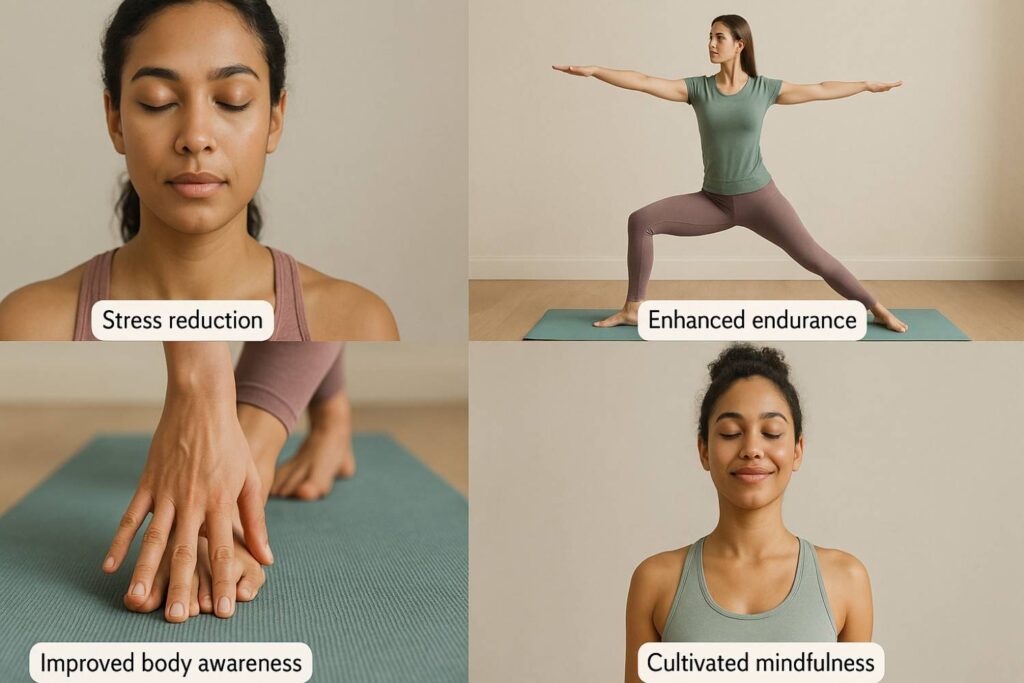
Frequently Asked Questions (FAQs)
Why is breath important in yoga?
Breath plays a vital role in yoga as it anchors attention and enhances mindfulness. By focusing on the breath, practitioners can create a deeper connection between their mental and physical states, fostering greater awareness in their practice.
What happens when you practice Ujjayi breath?
Practicing Ujjayi breath combines relaxation and energy, which improves focus and helps practitioners move through poses more gracefully. This technique is often referred to as “victorious breath” and aids in maintaining a steady flow during yoga sessions.
How can breath control benefit mental health?
Calm, controlled breathing is proven to alleviate anxiety and stress, promoting clarity and concentration. Incorporating breath control into daily routines can significantly foster mental well-being and resilience against stressors.
Can breath focus improve my yoga practice?
Yes, focusing on your breath can enhance alignment, deepen your practice, and help prevent injuries. This mindfulness allows yogis to be more in tune with their bodies and adjust their movements more effectively.
How do I start integrating breath into my yoga?
Begin by consciously instructing your breath during asanas and meditation. Aim to maintain a steady rhythm that aligns with your movements, ensuring that your inhalations and exhalations complement your practice. The synergy between breath and movement can lead to a more enriching yoga experience.
Conclusion
[{“subheading”:”Prioritizing Breath Over Pose”,”pointstocover”:[“Deepening yoga experience through breath focus, cultivating mindfulness and connection to practice.”]}]
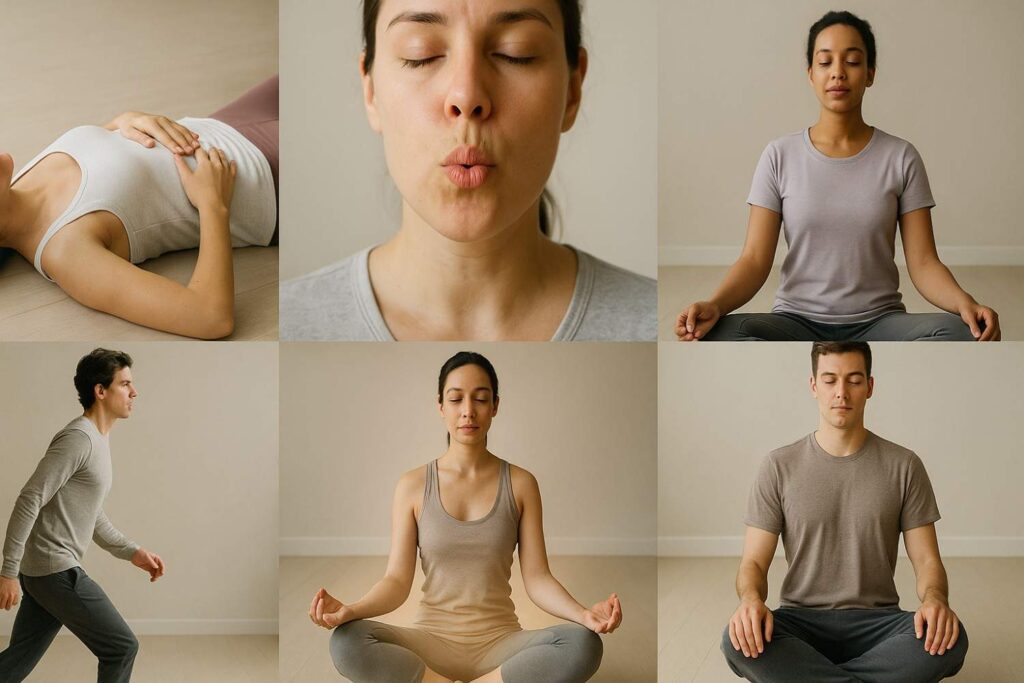
Prioritizing Breath Over Pose
Breath is the essence of yoga practice, often overlooked in favor of complex poses. By focusing on breathing, practitioners can significantly enhance their yoga experience.
Concentrating on the breath cultivates mindfulness. This awareness allows individuals to connect with their bodies, leading to a deeper understanding of their physical and emotional states. As practitioners engage in breath-focused techniques, they may find a stronger sense of presence, enabling them to navigate their practice with more intention 1.
Additionally, the connection between breath and posture is crucial. Rather than striving for perfection in every pose, aligning breath with movement fosters a more authentic practice. This integration brings about a state of calm and reduces stress, making yoga not just a physical routine, but a holistic approach to wellness 2.
In conclusion, prioritizing breath over pose in yoga offers significant benefits. It deepens the practice, promotes mindfulness, and nurtures a greater connection to oneself. This shift in focus leads to a more rewarding and enriching yoga experience overall.
Breath Control Techniques
Breath control is key to improving respiratory function and enhancing overall well-being. Here are several techniques to master your breathing.
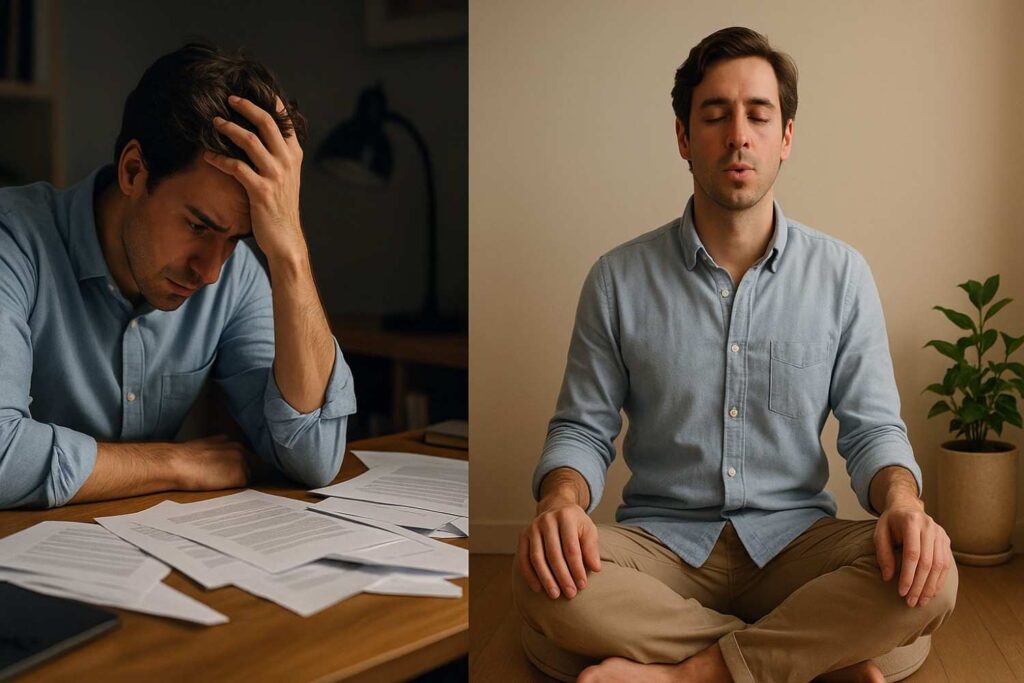
Diaphragmatic Breathing
Diaphragmatic breathing, also known as abdominal or deep breathing, focuses on breathing with the diaphragm rather than the chest. This technique allows for deeper inhalation, which increases oxygen intake.
How to perform diaphragmatic breathing step-by-step:
- Start by lying down or sitting comfortably.
- Place one hand on your chest and the other on your abdomen.
- Inhale deeply through your nose, ensuring that your abdomen rises while your chest remains still.
- Exhale slowly through your mouth, feeling your abdomen lower.
Benefits:
- Strengthens the diaphragm.
- Reduces overall workload on the respiratory system.
- Lowers oxygen demand during physical activity.
Pursed Lip Breathing
Pursed lip breathing helps slow down your breathing pace and improve oxygen exchange in the lungs.
Step-by-step guide to pursed lip breathing:
- Inhale deeply through your nose for two counts.
- Purse your lips as if you are going to whistle.
- Exhale slowly and gently through your pursed lips for four counts.
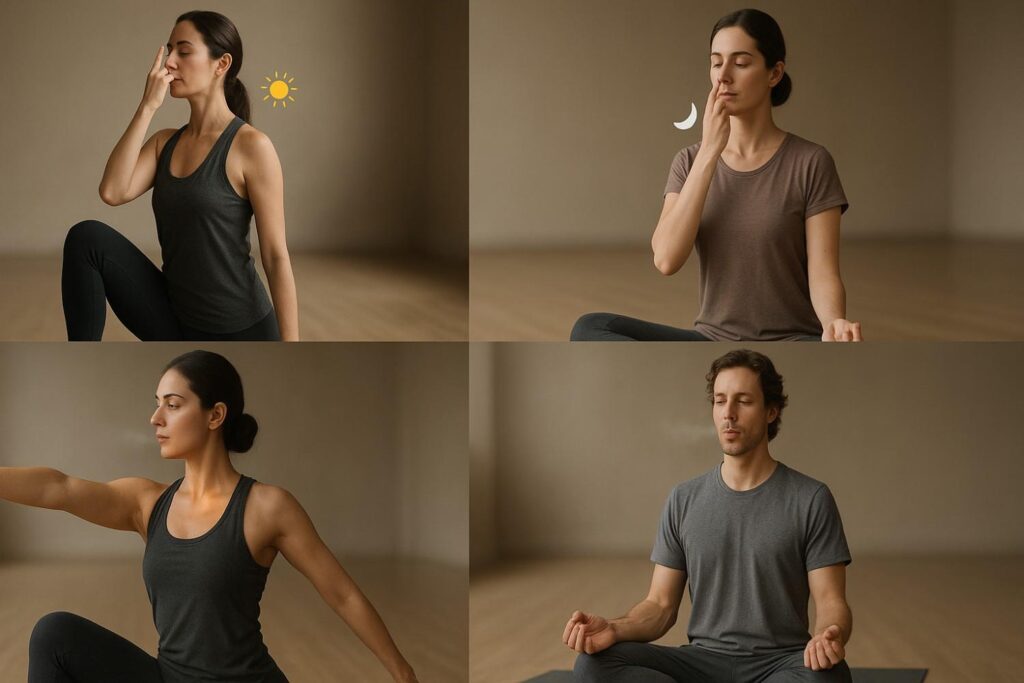
Benefits:
- Slows breathing, which can help alleviate shortness of breath.
- Improves oxygen intake by keeping the airways open longer.
Relaxed Breathing
Relaxed breathing emphasizes a gentle and calm approach to breathing, promoting a state of relaxation.
Instructions for relaxed breathing technique:
- Sit or lie down in a comfortable position.
- Close your eyes and take a slow, deep breath in through your nose.
- Allow your breath to flow out gently and slowly through your mouth.
- Continue to breathe at a natural pace, focusing on maintaining a relaxed state.
Benefits:
- Enhances breathing efficiency.
- Engages the diaphragm effectively, leading to better relaxation.
Blow As You Go Breathing
This technique involves coordinating your breath with physical activity, which can help manage breathlessness during exertion.
Guidance on coordinating breath with physical effort:
- Inhale deeply before beginning a physical task.
- Exhale steadily while performing the action, such as lifting or pushing.
- Continue this pattern throughout the activity, taking regular breaths as needed.
Benefits:
- Makes physical tasks easier to manage.
- Helps control feelings of breathlessness during exertion.
Breath Focus Technique
This technique revolves around focusing on your breath to promote mental clarity and relaxation.
Detailed steps for practicing the breath focus technique:
- Find a quiet place and sit comfortably.
- Close your eyes and take a few deep breaths.
- Focus your attention entirely on your breathing pattern—notice the rise and fall of your abdomen.
- If your mind wanders, gently bring your focus back to your breath.
Benefits:
- Manages anxiety by shifting focus away from stressors.
- Promotes a sense of relaxation and calmness.
By incorporating these breath control techniques, individuals can significantly improve their respiratory health and overall wellness.
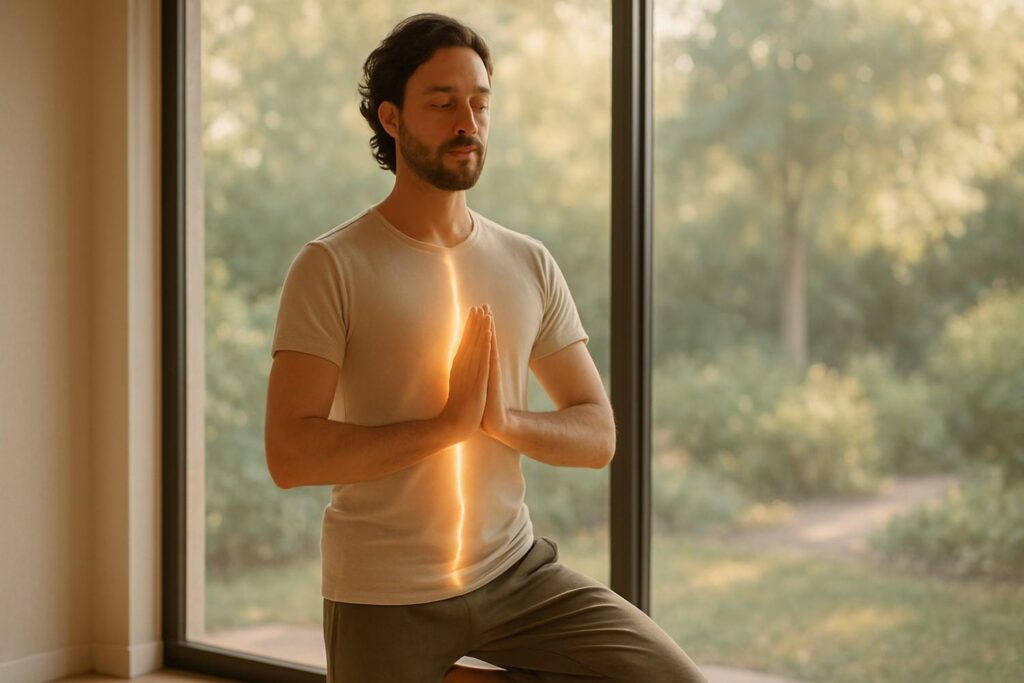
Impact of Breath on Mental Health
Focusing on our breath can transform our mental state. Engaging in conscious breathing activates the body’s relaxation response, which is key to reducing stress hormones. This physiological change can lead to significant improvements in our overall tranquility and mental clarity.
Benefits of Focusing on Breath
- Reduces Stress Hormones: By consciously slowing down our breath, we encourage the body to engage in a state of calm. Research shows this leads to lower levels of cortisol, often referred to as the stress hormone.
- Enhances Focus and Concentration: Practicing breath awareness can significantly improve one’s ability to concentrate. As we focus on our breathing, distractions become less prominent, allowing us to channel our mental energy more effectively.
- Boosts Emotional Well-Being: Focusing on breath not only helps in managing stress but also enhances our emotional well-being. The process can cultivate a sense of balance and emotional resilience, which are essential for mental health.
In summary, integrating breath-focused practices into daily routines can serve as a powerful tool for enhancing mental health and well-being.
Meditation Techniques Focusing on Breath
To practice breath meditation effectively, it’s essential to follow specific steps that facilitate focus and calmness.
Steps for Practicing Breath Meditation
- Selecting a Quiet Space for Meditation
- Find a location where you won’t be disturbed. The environment should be calm and serene, which helps to enhance concentration.
- Adopting a Comfortable Position
- Sit or lie down in a way that feels comfortable for your body. This could be in a cross-legged position, on a chair with feet flat on the ground, or lying down if that feels best.
- Focusing on the Natural Sensations of Breath
- Begin by taking deep breaths and then allow your breath to return to its natural rhythm. Pay attention to the sensations of the air entering and leaving your nostrils or the rise and fall of your chest and abdomen.
- Acknowledging and Redirecting Distractions
- It’s normal for your mind to wander during meditation. Acknowledge these distractions without judgment and gently guide your focus back to your breath.
- Gradually Increasing Practice Time from Five Minutes
- Start with short meditation sessions of about five minutes. As you become more comfortable with the practice, gradually extend the duration of your sessions. This increase allows deeper engagement with your breath meditation practice.
By employing these techniques, practitioners can build a robust meditation routine centered on breath, leading to improved mindfulness and well-being.
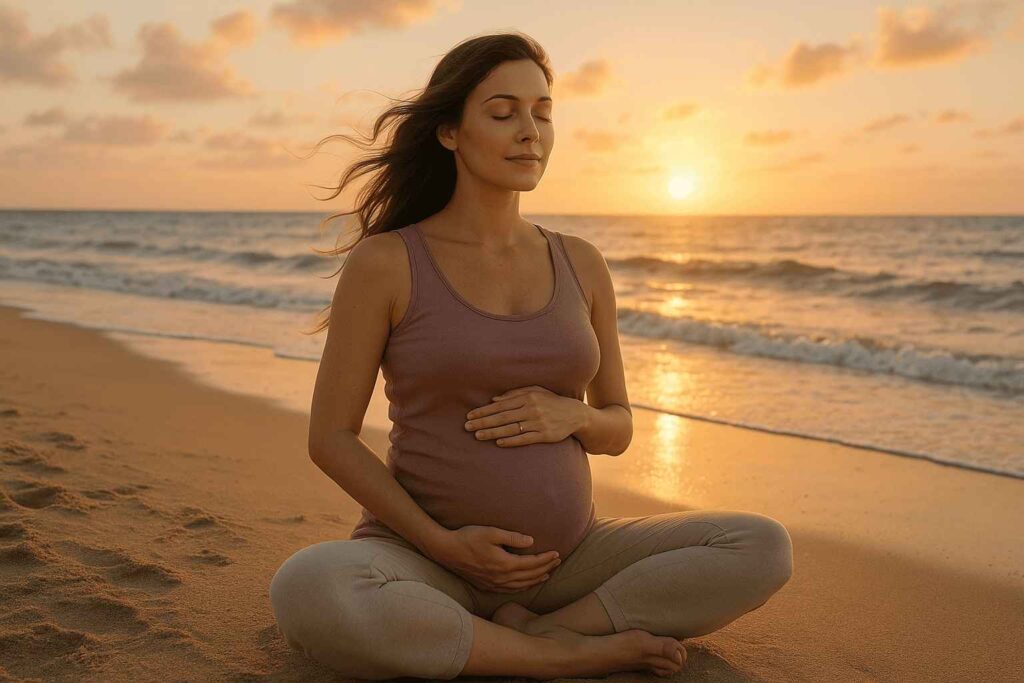
Breath-centered Yoga Practices
Understanding Pranashakti
Pranashakti refers to the vital energy that flows through the body, primarily relying on the breath as its vehicle. The concept hinges on the belief that breath is not merely a physiological function but a vital life force that connects the mind and body. Proper breathing practices are essential for cultivating and enhancing this life force, which is integral to overall well-being. By focusing on breath during yoga, practitioners can harness Pranashakti effectively, facilitating deeper states of awareness and tranquility.
Breath Patterns and Techniques
There are various techniques that can be employed to gain conscious control over breathing patterns. These practices often include exercises designed to regulate inhalation, exhalation, and breath retention.
Some key methods include:
- Ujjayi Pranayama: This technique involves a slight constriction of the throat during inhalation and exhalation, which produces a soothing sound similar to ocean waves. It promotes focus and can enhance energy flow throughout the body.
- Kumbhaka: This breath retention practice is often integrated into different poses to heighten mindfulness and concentration. By holding the breath, practitioners can deepen their engagement with the present moment, making it easier to maintain balance in both the physical and mental aspects of their practice.
By incorporating these techniques into yoga sessions, individuals can significantly benefit from enhanced control over their breath, fostering a powerful connection between their physical movements and inner energy.
The emphasis on breath not only stabilizes the body during yoga poses but also encourages a calm, centered state of mind, making the practice holistic and comprehensive.
Guidelines for Breath Awareness in Yoga
Breath is the cornerstone of yoga practice, interlinking the body, mind, and spirit. Proper regulation and awareness of breath can significantly enhance the benefits of yoga, leading to a more profound practice. Understanding the characteristics of optimal yoga breathing is essential for anyone looking to deepen their experience on the mat.
Characteristics of Optimal Yoga Breathing
- Diaphragmatic Breathing: This technique involves breathing deeply from the diaphragm rather than shallowly from the chest. This method promotes full oxygen exchange and increases lung capacity, fostering relaxation and reducing stress.
- Nasal Breathing: It is recommended to breathe through the nose, as it helps filter, warm, and humidify the air. Nasal breathing can also optimize oxygen uptake and activate the body’s relaxation response.
- Deep Breathing: Engaging in deep breathing expands the lungs fully, allowing for maximum oxygen intake. This form of breathing can lead to reduced anxiety and a greater sense of calm.
- Smooth and Even Breathing: A smooth, steady breath is vital in yoga practice. This quality of breath helps maintain focus and mindfulness, essential for achieving a meditative state during practice.
- Soundless Breathing: Practicing breath in silence can enhance concentration and promote a sense of inner peace. Soundless breathing encourages awareness of the breath itself without external distractions.
- Continuous Breathing: Maintaining a continuous flow of breath, without pauses, aids in cultivating an internal rhythm. This technique can help synchronize movements with breath, deepening the yoga experience.
By integrating these characteristics into your practice, you may enhance the physical and mental benefits of yoga, creating a more immersive and fruitful experience.
Breath and Body Connection in Yoga
Breath serves as a vital link between the mind and body, underscoring the essence of mindfulness and awareness in yoga practice. The process of breathing is not merely a physiological function; it carries profound implications for mental clarity and emotional stability. When practitioners focus on their breath, they cultivate an increased sense of presence in their physical bodies, grounding them in the moment. Engaging in deep, intentional breathwork enhances the ability to connect mindfully with both physical sensations and thoughts, fostering an integrated experience of yoga.
Through this breath-centered approach, individuals can tap into their body’s innate wisdom, nurturing a deeper understanding of their physical and emotional states. This awareness can lead to significant improvements in overall health, stress management, and emotional resilience, highlighting the transformative power of the breath in yoga practice.
Breathing Patterns in Different Yoga Styles
Breath is integral to yoga, influencing mental clarity, emotional stability, and physical health. Different yoga styles emphasize unique breathing techniques that enhance practice.
Types of Breathing Techniques in Yoga
The following techniques are commonly found across various yoga styles, each serving distinct purposes:
- Nadi Shodhana: Also known as alternate nostril breathing, this technique promotes relaxation and balance. It harmonizes the body’s energies and is often used in pranayama practices.
- Ujjayi: Often referred to as “victorious breath,” Ujjayi involves slightly constricting the throat to create a soothing sound while inhaling and exhaling. This technique helps maintain focus during challenging poses.
- Shitali: This cooling breath involves inhaling through a rolled tongue or pursed lips, which lowers body temperature and calms the mind.
- Sitkari: Similar to Shitali, Sitkari is performed by inhaling through clenched teeth, which also helps cool the body and calm nerves.
- Brahmari: Known as “bee breath,” this technique produces a humming sound during exhalation. It fosters a sense of deep peace and is excellent for reducing stress.
- Bhastrika: This forceful breath involves rapid inhalation and exhalation, invigorating the body and energizing the nervous system.
- Surya Bhedana: This technique focuses on inhaling through the right nostril, believed to energize and activate the body, particularly when feeling lethargic.
- Chandra Bhedana: In contrast to Surya Bhedana, this technique involves inhaling through the left nostril, promoting calmness and relaxation.
- Active Yoga Breathing: This encompasses various forms of breath awareness, encouraging practitioners to synchronize breath with movement, enhancing the overall experience of yoga.
These breathing techniques serve as foundational elements in yoga training, fostering both physical and mental well-being through mindful practice 1.

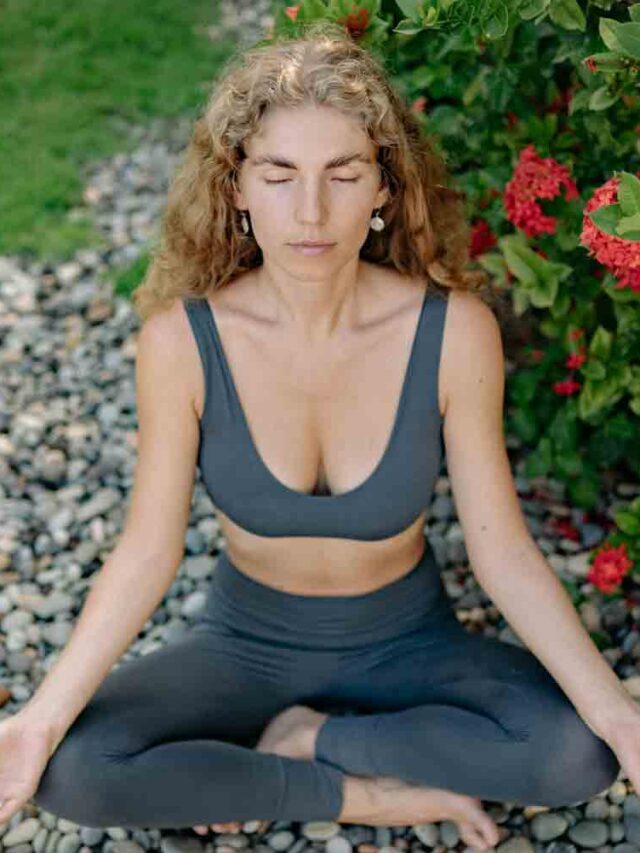
2q616c
ao52m3
pdvlya